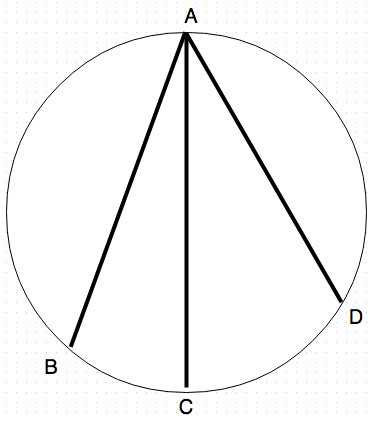Grooves through a sphere
 A sphere, as shown in the image is placed on a horizontal surface with three grooves drilled into it from point
to points
and
A sphere, as shown in the image is placed on a horizontal surface with three grooves drilled into it from point
to points
and
is a diameter to the sphere, while and are chords, such that:
An object of mass is dropped thrice, each time through each groove, and the time taken for it to emerge out of the groove is measured.
Now, let (where and are coprime integers) be the ratio of the respective times that the object takes to exit through grooves and Find
Details and Assumptions
- Gravity is constant at vertically downwards at all times.
- The grooves have negligible friction, and the object is considered to be point sized.
Please do note that this problem was taken from a teacher of mine.
The answer is 3.
This section requires Javascript.
You are seeing this because something didn't load right. We suggest you, (a) try
refreshing the page, (b) enabling javascript if it is disabled on your browser and,
finally, (c)
loading the
non-javascript version of this page
. We're sorry about the hassle.
AC is a diameter so ∠ A B C and ∠ A D C are both right angles
Let AC=x Then AB=x cosθ and AD=x cos2θ
Resolving gravity in the direction of motion
For AC acceleration=g
For AB acceleration=g cosθ
For AD acceleration=g cos2θ
s = u t + 2 a t 2
u = 0 ∴ t = a 2 s
∴in all cases t = g 2 x ∴ a : b : c = 1 : 1 : 1 and a + b + c = 3
Although, the answer can be found much quicker by considering the case θ=0 where the three grooves are the same